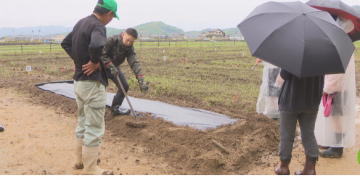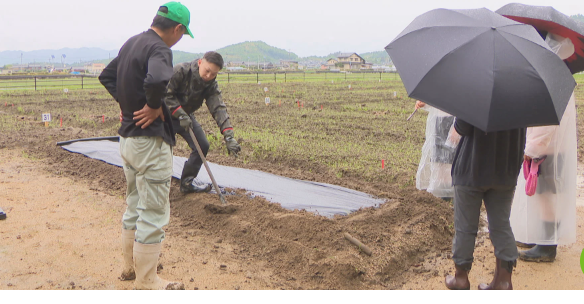By transforming unused land into thriving agricultural areas, Kiyone Community Garden in Soja City offers residents the opportunity to connect with nature, grow their own produce, and foster a sense of community.
In an effort to repurpose vacant land and increase community activity, the City of Soja opened the Kiyone Community Garden. During the opening ceremony, Mayor Satoshi Kataoka celebrated the event with a ribbon cutting along with enthusiastic residents. The garden, which covers approximately 2,300 square meters, is divided into 41 plots, each of which is rented out to non-agricultural residents of the city of Soja for a nominal fee of 250 yen per month.
Thriving Community Initiative
Kiyone Community Garden has already received applications for more than 70% of its plots, reflecting high demand among city residents. The initiative is part of a broader effort by the city of Soja, which currently has four other community gardens, to effectively utilize vacant land and improve the quality of life for residents. Mayor Kataoka emphasized the city’s commitment to reducing unused land and improving community wealth.
Benefits beyond improvement
For many participants, a garden is more than just a place to grow vegetables. One resident emphasized the educational and social opportunities the garden offers, especially for young families: “I want my little children to be able to touch the soil and eat what we put together. We’re excited to grow tomatoes, eggplants, and maybe even try growing mushrooms.”
Sustainable urban agriculture
The Kiyone Community Garden is a prime example of sustainable urban agriculture, solving numerous urban problems by transforming underutilized spaces into productive gardens. This not only provides residents with fresh food and entertainment, but also promotes environmental sustainability and community cohesion.
Innovative use of Soja’s vacant land through the creation of community gardens, such as Kione’s initiative, is a testament to the strength of local government and collaboration between communities. Such projects not only optimize land use, but also enrich the lives of residents by promoting a deeper connection with nature and each other. As urban areas continue to grow, sustainable solutions like these will become increasingly important to improve urban life.


































